Types Of Denim (In Different Types Of Demin Weaves, Dyes, Washes)
Jump To:
Firstly, we’re going to look at the types of denim and the types of jeans are different from the types of denim. How? Here’s denim vs jeans: The difference between denim and jean is that while the former are fabrics used to make clothes like jackets or overalls, jeans can also be a type of garment. They’re often made from this fabric called ‘denim’. Also, check out the types of jeans for men to know about every fit!
What Is Denim?
One of the most iconic fabrics ever invented and marketed is denim. The material got its name from its place of origin. Denim is the derivation of the French word ‘serge de Nimes’ which means the types of denim that are produced in the town named Nimes in France. The biggest producer of denim fabric was the city named Genoa, and the name of this city is the origin of the word ‘jeans’. Since the 1850s, denim fabric has remained widely in use for making jeans.
This type of fabric is made out of cotton fibers, and denim has a twill fabric weave. The unique characteristic aspect of denim fabric is the diagonal twill weaving pattern. Denim trousers rose to this worldwide popularity because of two American men named Levi Strauss and Jacob Davis in 1873.
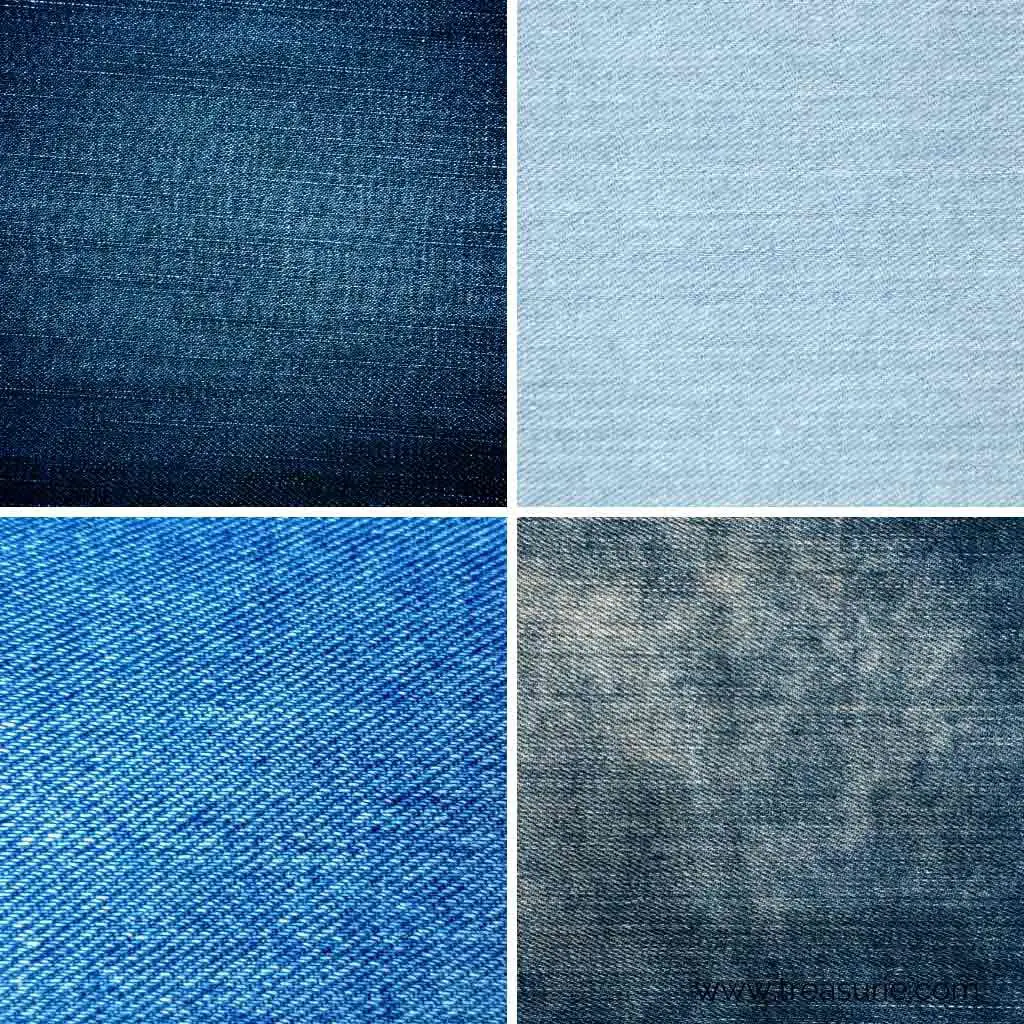
What Are The Different Types Of Denim?
The original denim fabric and jeans trousers were made from 100% cotton woven in twill looms. But now with modern manufacturing technology, various types of denim are produced at present with the addition of Lycra or polyester. Following are some of the best types of denim fabric-
1. Raw Denim:
This denim does not undergo any washing after dyeing. Raw denim is also the first stage of the denim journey. With washing the dark blue colour of the denim will slowly fade. This denim does not receive any treatment either so it stiff to wear and is long-lasting if you don’t wash it often. But you must prewash the raw denim before wearing or sewing. Another name of this denim is dry denim.
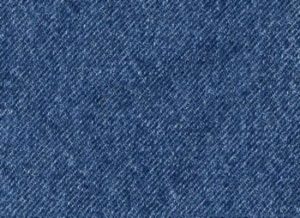
2. 100% Cotton Denim:
The hundred per cent cotton denim is the standard type of denim fabric that you can treat and use in various ways to create several other types of denim. This type of denim fabric is versatile, comfort providing, and very durable as well.
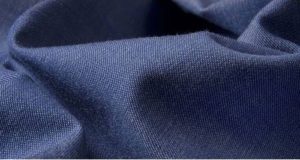
3. Sanforized Denim:
Sanforized denim is the raw denim which goes through treatment for some shrinkage. You need to know whether your raw denim is Sanforized denim or not because if it is not, you may want to go a size up to allow for shrinkage. Other than raw denim, most of the types of denim are Sanforized denim. This type of denim is also known as pre-shrunk denim.
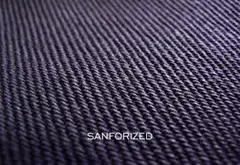
4. Indigo Dyed Denim:
Indigo dyed denim is the most common type of denim. The warp is thread dyed of Indigo dyed denim while the weft thread is left white and this results in its distinctive blue look and the in the inside of the denim clothing you see the lighter look. The name of the blue dye indigo came from the indigo plant.
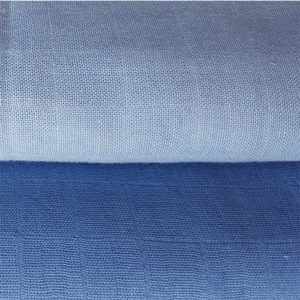
5. Colour Dyed Denim:
The main two types of coloured denim are blue and the rest of various colours. As the blue colour is given with indigo dyeing, sulphur dyeing gives types of denim all other colours like black, pink, grey, green, red, mustard etc.
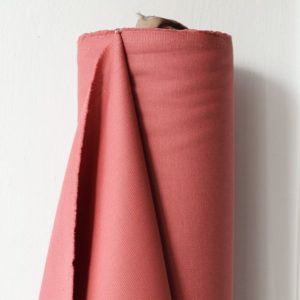
6. Selvage Denim (Selvedge or Self-edge):
Selvage denim has colours, usually red or orange, along the sides of the denim to prevent fraying. This denim is of better quality than any other types of denim. Japan is the major producer of this type of denim material.
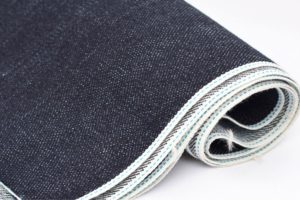
7. Acid Wash Denim:
Acid wash denim is one of the types of denim washes, also known as marble denim because of the finish accomplished in denim material using pumice stone drenched in chlorine. Due to the abrasion with the stones, the colour of the fabric fades and also creates an impressive distinction with the indigo colour. Then the material goes through washing, softening and drying processes. In the 1980s this look was very famous and has had many recurrences.
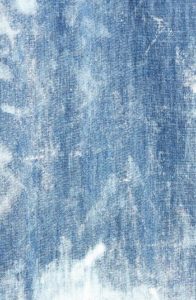
8. Stone Wash Denim:
Stonewash denim is made with the help of pumice stones to remove the dye to give a lived-in look, and the fabric goes through abrasion. Stonewash is challenging to control and may even give a rough abrasion. The items made from this type of denim is not long-lasting.
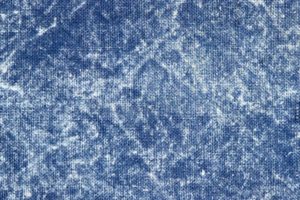
9. Crushed Denim:
This type of denim fabric receives such treatment such that it looks permanently crushed or wrinkled. This wrinkle will never come out in the wash. Some times this process is put to use along with other procedures such as stonewash or acid to give a genuinely worn-out look.
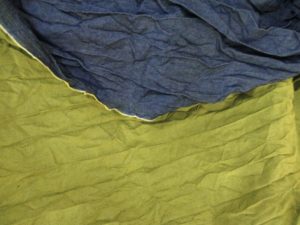
10. Poly Denim:
Some amount of polyester fibres is put together in this type of denim fabric. Poly denim is very soft in touch, stretchable to an extent and are very easy to take care. The most famous product of this denim is shirts, hats and jackets. The blended polyester adds durability, smoothness and finishes to denim.
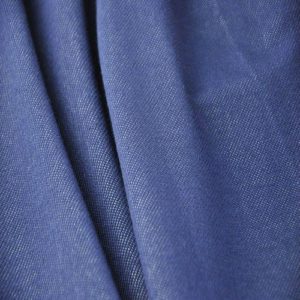
11. Stretch Denim:
The stretch denim is put together with synthetic fibres like Lycra or Spandex to give the denim a stretchy property. Stretch denim is very comfortable to wear. Tight jeans are mainly made using stretch denim.
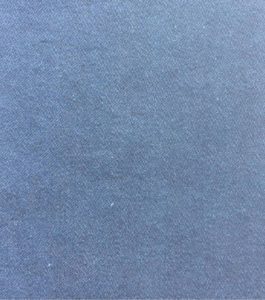
12. Bull Denim:
Bull denim is one of the types of denim weaves, a denim fabric that is very tough and sturdy and is made from 100% cotton. This denim fabric is very durable and heavy, although not as tough as a canvas. It is the 3×1 twill fabric construction that makes bull denim so sturdy and rigid. Upholstery and home d cor are mostly made of bull denim. These fabrics are soft on one side with a noticeable weave.
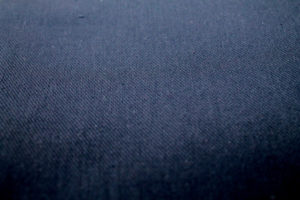
13. Waxed Reverse Denim:
A very innovative take on the denim fabric was making a side of its water-resistant. This is made by coating wax on the reverse side of the denim fabric for water resistance properties. Bags and most outdoor gear can be made out of waxed reverse denim.
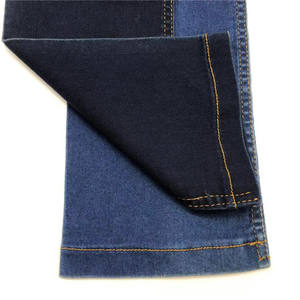
14. Ecru Denim:
The process of indigo dyeing is not a requirement for Ecru denim fabric. This fabric has a natural colour of denim. Mostly they are creamy and pale in colour.
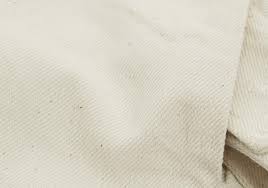
15. Organic Denim:
In the manufacturing or growth of Organic denim, no chemicals are put into use. Due to which organic denim is a healthier substitute for regular denim.
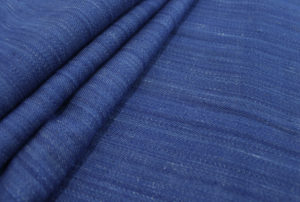
Conclusion
No other fabric or clothing style has impacted the entire world and endured within the American culture like denim fashion, and this is what makes denim a heritage artifact. We have covered a lot about this sturdy yet fashionable fabric material, and now it is up to you to choose the type of denim that suits you best.
